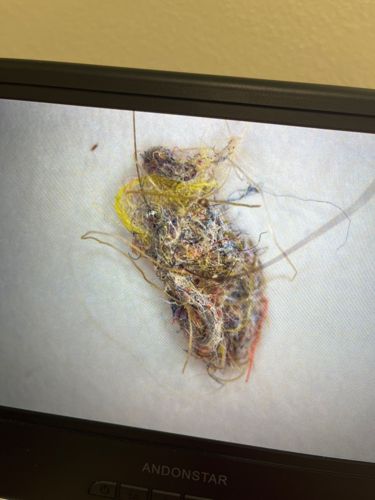Case-bearing Clothes Moth Larva
Scientific Name: Tinea pellionella
Order & Family: Lepidoptera, Tineidae
Size: Larvae typically measure about 1/4 to 1/2 inch (6-12 mm) in length. Adults have a wingspan of about 1/2 inch (12-14 mm).

Natural Habitat
Indoors, particularly in dark, undisturbed areas such as closets, attics, under furniture, and in storage boxes. They prefer areas with animal-based fibers like wool, silk, fur, feathers, and lint.
Diet & Feeding
They feed primarily on animal fibers containing keratin, such as wool, fur, feathers, silk, felt, and lint. They can also consume blends of natural and synthetic fibers, and occasionally plant-based materials if other food sources are scarce. They are known for damaging clothing, carpets, upholstered furniture, and museum specimens.
Behavior Patterns
The larva constructs a silken case, which it carries with it and enlarges as it grows. This case is often covered with bits of the material it is feeding on, providing camouflage. They are reclusive and prefer dark, undisturbed environments. The larval stage can last from one month to over a year, depending on environmental conditions and food availability. Adults are poor fliers and tend to scurry or hop rather than fly long distances; they are not attracted to light.
Risks & Benefits
Potential risks include significant damage to textiles, clothing, carpets, and stored items made of natural fibers, leading to economic loss. They do not bite or transmit diseases to humans. Benefits are limited; in natural settings, they contribute to the decomposition of animal remains, but their presence indoors is almost exclusively considered a pest.
Identified on: 9/5/2025